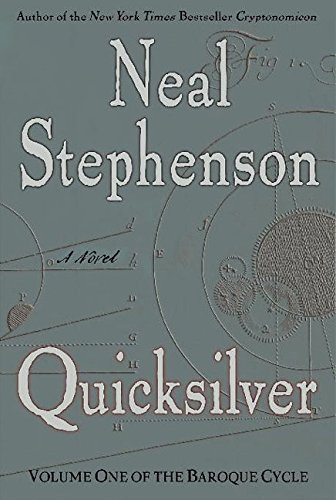Quicksilver (The Baroque Cycle, Vol. 1) / Stephenson, Neal
| List Price: | |
Our Price: $20.18 | |
|
For Bulk orders
| |
|
Used Book Price: | |
| Quicksilver (The Baroque Cycle, Vol. 1) / Stephenson, Neal | |
| Publisher: William Morrow | |
| Availability:In stock. Usually ships within 3 to 4 days. | |
| Sales Rank: 710102 | |
|
Similar Books
In the second book, Stephenson introduces Jack Shaftoe and Eliza. "Half-Cocked" Jack (also know as the "King of the Vagabonds") recovers the English Eliza from a Turkish harem. Fleeing the siege of Vienna, the two journey across Europe driven by Eliza's lust for fame, fortune, and nobility. Gradually, their circle intertwines with that of Daniel in the third book of the novel.
The book courses with Stephenson's scholarship but is rarely bogged down in its historical detail. Stephenson is especially impressive in his ability to represent dialogue over the evolving worldview of seventeenth-century scientists and enliven the most abstruse explanation of theory. Though replete with science, the novel is as much about the complex struggles for political ascendancy and the workings of financial markets. Further, the novel's literary ambitions match its physical size. Stephenson narrates through epistolary chapters, fragments of plays and poems, journal entries, maps, drawings, genealogic tables, and copious contemporary epigrams. But, caught in this richness, the prose is occasionally neglected and wants editing. Further, anticipating a cycle, the book does not provide a satisfying conclusion to its 900 pages. These are minor quibbles, though. Stephenson has matched ambition to execution, and his faithful, durable readers will be both entertained and richly rewarded with a practicum in Baroque science, cypher, culture, and politics. --Patrick O'Kelley
Now you can buy Books online in USA,UK, India and more than 100 countries.
*Terms and Conditions apply
Disclaimer: All product data on this page belongs to  .
.
No
guarantees are made as to accuracy of prices and information.










